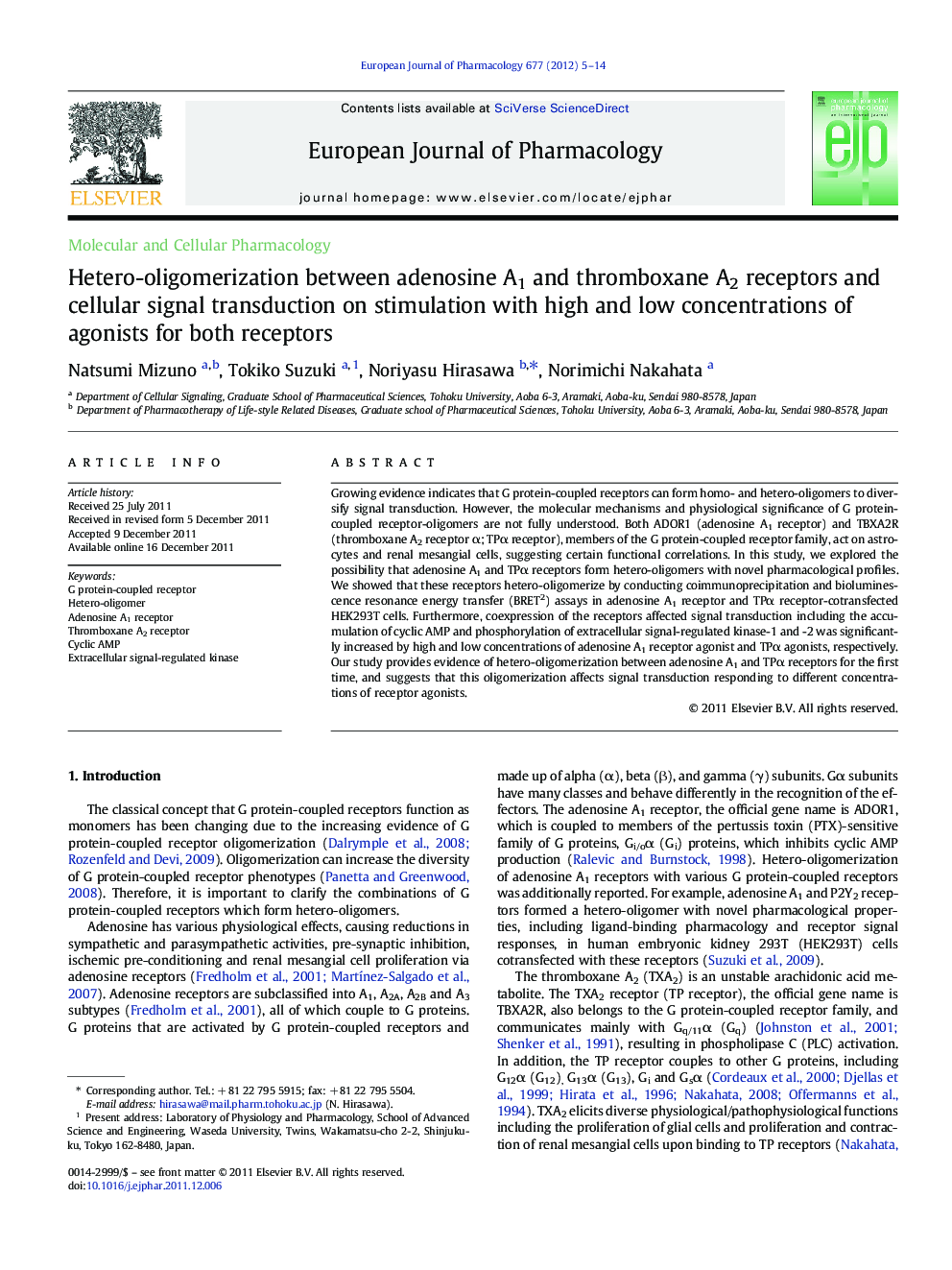| Article ID | Journal | Published Year | Pages | File Type |
|---|---|---|---|---|
| 2532437 | European Journal of Pharmacology | 2012 | 10 Pages |
Growing evidence indicates that G protein-coupled receptors can form homo- and hetero-oligomers to diversify signal transduction. However, the molecular mechanisms and physiological significance of G protein-coupled receptor-oligomers are not fully understood. Both ADOR1 (adenosine A1 receptor) and TBXA2R (thromboxane A2 receptor α; TPα receptor), members of the G protein-coupled receptor family, act on astrocytes and renal mesangial cells, suggesting certain functional correlations. In this study, we explored the possibility that adenosine A1 and TPα receptors form hetero-oligomers with novel pharmacological profiles. We showed that these receptors hetero-oligomerize by conducting coimmunoprecipitation and bioluminescence resonance energy transfer (BRET2) assays in adenosine A1 receptor and TPα receptor-cotransfected HEK293T cells. Furthermore, coexpression of the receptors affected signal transduction including the accumulation of cyclic AMP and phosphorylation of extracellular signal-regulated kinase-1 and -2 was significantly increased by high and low concentrations of adenosine A1 receptor agonist and TPα agonists, respectively. Our study provides evidence of hetero-oligomerization between adenosine A1 and TPα receptors for the first time, and suggests that this oligomerization affects signal transduction responding to different concentrations of receptor agonists.
